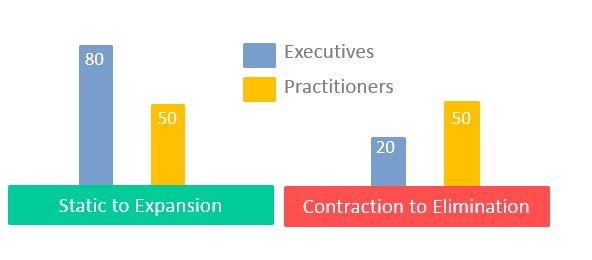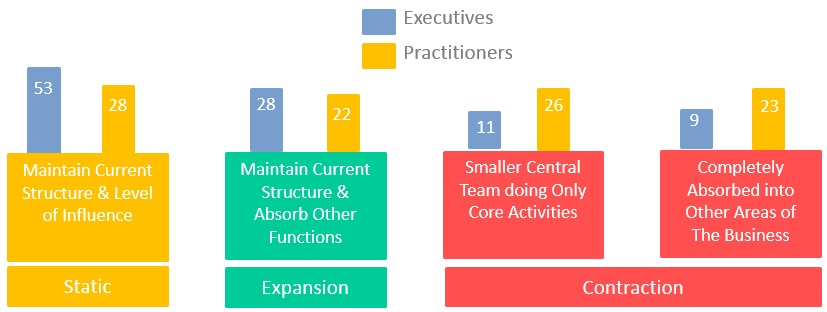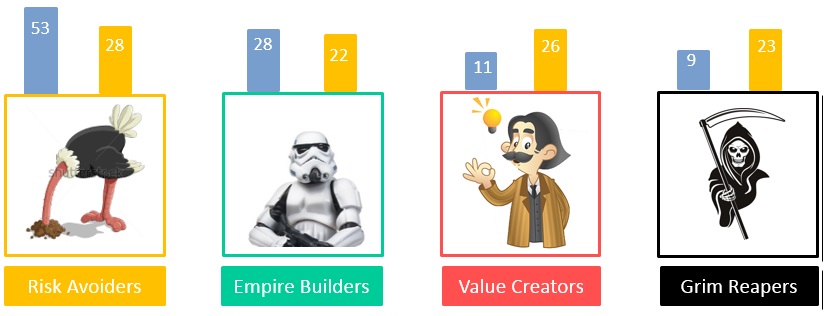The stage is set in the battle for procurements future:
The Future of Procurement: Commanding the Stage
The Future of Procurement: Commanding the Stage – The future of the procurement function is a hot topic at the moment. Amongst the more insightful outputs comes from Oxford Economics, who recently published the results of a study that shows the evolution of procurement isn’t slowing down. More interestingly it provides insight into the assembling actors and the positions they are taking. A summary is published in SDCE Magazine here.
Here we discuss why CPO’s and procurement professionals must ‘command the stage’ by taking an active role in writing the script for the future of the profession.
1. Oxford Economics Study Summary
Details of a recent Oxford Economics study shows two interesting dynamics that reveal different mindsets:
• Expansion Mindset
• Contraction Mindset
The study presents a mixed picture. The majority of executives fall in the Static – Expansion mindset (80%). While, disturbingly, practitioners are split 50/50 between the expansion and contraction mindset.
The expansion mindset ranges from maintaining current structure and influence through to maintaining current structure while absorbing other functions.
The Contraction – Elimination mindset ranges from shrinking the function through to being completely absorbed by the business.
It seems all is to play for. However, simply looking at these findings is not enough to understand the battle taking place to determine procurements future role. We must understand the mindsets of the participating actors more completely than we do now to determine where the continuing transformation of procurement will take
us in the years ahead.
2. What does it mean for the future of procurement?
Translating the Oxford study into actors and evaluating their positions and interest tells us much more about the battle to come.
2.1 Introducing the players – scene 1:
The first scenario represents the ostrich while the last scenario represents the grim reaper.
To me, the ‘no change’ and ‘elimination’ outcomes suggested at each end of the spectrum in the Oxford report are unlikely to occur. The middle ground is where the critical dialog will take place.
Ostriches
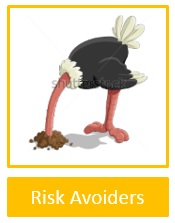 The static view represents the risk avoiders or Ostriches as I have called them. They have their heads in the sand, seek to maintain the status quo and resist change.
The static view represents the risk avoiders or Ostriches as I have called them. They have their heads in the sand, seek to maintain the status quo and resist change.
The ostrich ignores the dynamic nature of business and the role of procurement within it. A look back at the last 30 years should demonstrate how significantly procurement has changed. To expect this evolution to stop would be a classic case of denial.
They are internally focused with fixed mindsets. Consequently, they seldom step outside their job descriptions and only operate within the boundaries of their work.
Empire Builders
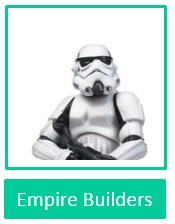 The expansionary view I call the Empire Builders. Their aim; increased power and influence in the organization. Their expansionary mindset seeks opportunities to take on additional responsibilities, believing procurement work being done by other functions could be done better by procurement.
The expansionary view I call the Empire Builders. Their aim; increased power and influence in the organization. Their expansionary mindset seeks opportunities to take on additional responsibilities, believing procurement work being done by other functions could be done better by procurement.
There are several functions that procurement could arguably make a claim to:
1. Facilities
2. Fleet Management
3. Risk, etc.
They have an internal focus with growth mindsets. Those with good people skills are likely viewed as leaders in the organization. When they do not have good people skills, they are viewed as power-hungry.
Value Creators
 The smaller central team advocates are the value creators. Their aim is to add value and create stakeholder and customer satisfaction. Their customer-centric focus on value creation mean they seek to understand business needs and interests and to develop value propositions that address them.
The smaller central team advocates are the value creators. Their aim is to add value and create stakeholder and customer satisfaction. Their customer-centric focus on value creation mean they seek to understand business needs and interests and to develop value propositions that address them.
They achieve sustainable business success because their expertise, knowledge, and skills have made a significant difference for the business, other than cost savings alone.
They are entrepreneurs, with an external focus and a growth mindset. As drivers of change, they can be perceived in the organization as disruptive. Some may see them as a threat to the status quo and undisciplined.
The Grim Reaper
 The grim reaper does not believe in procurement as a core business process. Their aim is to take procurement responsibility back to the stakeholders, believing that with the improved processes and increased automation now available, it signals procurements immenant death.
The grim reaper does not believe in procurement as a core business process. Their aim is to take procurement responsibility back to the stakeholders, believing that with the improved processes and increased automation now available, it signals procurements immenant death.
They look at procurement in isolation from the rest of the business, failing to recognize that all other functions are striving to move up the value chain as well, while doing more with less. As they do so, they are not likely to be able to devote sufficient time to procurement matters. The result, in my opinion will be a return to the fragmentation of the past and sub-optimal business outcomes.
3. Call to action
 Whatever your views, it is clear the stage is set in the battle for procurements future. It is also clear that factors such as automation, and business analytics will influence proceedings, however, it will be the political battle in each and every organization where the battle will be won or lost.
Whatever your views, it is clear the stage is set in the battle for procurements future. It is also clear that factors such as automation, and business analytics will influence proceedings, however, it will be the political battle in each and every organization where the battle will be won or lost.
To chart a course, there needs to be a clear direction for where procurement is heading, so CPO’s must have an ‘end game’ in view.
The Oxford study shows several possible outcomes dependent upon which mindset will prevail as business requirements evolve. CPO’s picking their actors carefully is a key factor. Ostriches looking to stand still will transform into Dodoes. Empire builders must be managed to ensure any expansionary action best supports the business. The value creators will do this instinctively, but they must be supported to push boundaries to capture new value.
The wild card after all the progress procurement has made in recent years is the Grim Reapers. CPO’s wishing to raise procurements potential even further must plan to ensure the Grim Reapers do not prevail.
Nuff said…
In the next scene we will discuss how the CPO can build a successful team.

